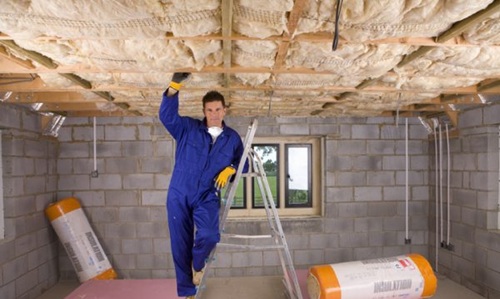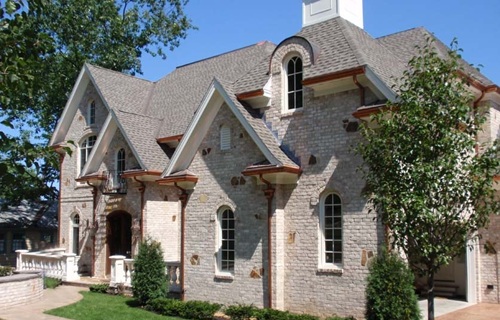Basements are often overlooked in home energy efficiency plans, yet they play a significant role in regulating indoor temperature and comfort. One key area many homeowners consider improving is basement ceiling insulation. Whether you’re finishing a basement, trying to reduce energy bills, or looking to dampen noise between floors, insulating the basement ceiling can offer multiple benefits—but it also comes with its share of trade-offs.
In this comprehensive guide, we’ll break down the pros and cons of basement ceiling insulation, helping you decide whether this upgrade is the right fit for your home.
What Is Basement Ceiling Insulation?

Basement ceiling insulation involves installing insulating materials—typically fiberglass batts, rigid foam, or spray foam—between the joists of the basement ceiling (i.e., the subfloor of the main level). Its main goals are to:
- Prevent heat transfer between floors
- Improve energy efficiency
- Control sound transmission
- Create thermal separation between conditioned and unconditioned spaces
While not always necessary in every home, it can significantly impact comfort, cost, and energy consumption, depending on how your basement is used.
Pros of Basement Ceiling Insulation
1. Improved Energy Efficiency
One of the primary reasons for insulating a basement ceiling is to prevent heat loss from the upper floors into the unheated basement. In cold climates, this can:
- Help maintain a warmer temperature upstairs
- Reduce heating costs during winter
- Contribute to a more energy-efficient home overall
If the basement is not conditioned (i.e., not heated or cooled), insulation helps establish a thermal barrier, minimizing heat transfer to that space.
2. Enhanced Soundproofing
Insulating the ceiling of a basement can significantly reduce noise transmission between floors. This is especially useful if:
- The basement is used as a home theater, music studio, or game room
- Upstairs rooms are bedrooms or offices where quiet is important
- You want to dampen footsteps, voices, or plumbing noises
Using materials like fiberglass batts or rock wool can create a quieter, more private environment for both floors.
3. Better Temperature Control Between Floors
By insulating the ceiling, you’re helping to isolate the basement’s temperature from the main living area. This means:
- Upstairs rooms stay warmer in winter
- Cold air in the basement doesn’t rise into your living space
- You have more control over the climate on each level
This is especially important in older homes where air leaks are common.
4. Cost-Effective Upgrade
Compared to other forms of insulation (like wall or attic insulation), insulating a basement ceiling is often a less invasive and more affordable project. DIY-friendly options like fiberglass batts can be installed with minimal tools and time, making it a relatively low-cost home improvement with long-term benefits.
5. Adds to Home Resale Value
Buyers today are increasingly energy-conscious. Homes with good insulation throughout—including the basement—are more attractive to potential buyers. This upgrade may increase your home’s marketability and energy rating.
Cons of Basement Ceiling Insulation
1. Reduced Warmth in the Basement
If your basement is unheated but used regularly, insulating the ceiling can make it feel noticeably colder. Since heat from the upper floor can no longer travel downward, the basement may become less comfortable for:
- Laundry areas
- Workout rooms
- Storage spaces requiring moderate warmth
This is an important consideration if you plan to spend time in the basement without adding heating.
2. Potential for Moisture Problems
Basements are naturally humid environments, and improper insulation can trap moisture, leading to:
- Mold and mildew growth
- Wood rot in joists or subflooring
- Decreased air quality and health risks
Using vapor-permeable insulation and ensuring proper ventilation and moisture control is essential. If moisture issues already exist, they must be addressed before insulating.
3. May Complicate Future Renovations
If you later decide to finish your basement, existing ceiling insulation might interfere with new electrical work, plumbing, or drywall installation. You may need to remove or adjust it, potentially adding labor and cost to your renovation.
4. Limited Benefit in Conditioned Basements
If your basement is already heated and cooled, insulating the ceiling may be unnecessary—or even counterproductive. In such cases, insulating the walls and floors of the basement offers better thermal efficiency. Insulating the ceiling in this situation can:
- Interrupt consistent temperature flow between floors
- Increase HVAC demand due to isolated temperature zones
5. Aesthetic Drawbacks
Exposed insulation in an unfinished basement ceiling can look unsightly, especially if it starts to sag or collect dust. While it serves a functional purpose, it may detract from the cleanliness or visual appeal of the space.
Best Practices for Basement Ceiling Insulation
If you decide to move forward with this upgrade, follow these tips:
- Use faced fiberglass batts for sound and thermal insulation
- Secure insulation with wire supports or netting to prevent sagging
- Avoid compressing the insulation, which reduces its effectiveness
- Leave space around pipes or electrical lines to prevent overheating
- Consider adding a vapor barrier if moisture is a concern (consult a professional)
Conclusion: Is Basement Ceiling Insulation Worth It?
Insulating a basement ceiling can be a highly beneficial investment when done in the right context—especially in homes with unconditioned, seldom-used basements, or when soundproofing is a priority. It boosts energy efficiency, reduces noise, and enhances comfort for upstairs living areas.
However, it’s not a one-size-fits-all solution. In finished or conditioned basements, insulating the walls might be more effective. Likewise, moisture control is a critical consideration to prevent unintended consequences.
Ultimately, whether or not basement ceiling insulation is right for you depends on how the space is used, your climate, and your energy efficiency goals. With the right approach, it can be a smart, cost-effective upgrade that adds comfort and value to your home.

